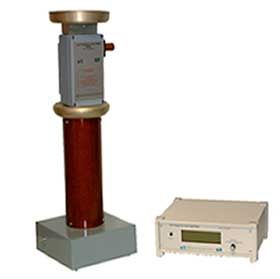
Tan Delta, also called Loss Angle or Dissipation Factor testing, is a diagnostic method of testing cables to determine the quality of the cable insulation. This is done to try to predict the remaining life expectancy and in order to prioritize cable replacement and/or injection. It is also useful for determining what other tests may be worthwhile.
If the insulation of a cable is free from defects, like water trees, electrical trees, moisture and air pockets, etc., the cable approaches the properties of a perfect capacitor. It is very similar to a parallel plate capacitor with the conductor and the neutral being the two plates separated by the insulation material. In a perfect capacitor, the voltage and current are phase shifted 90 degrees and the current through the insulation is capacitive. If there are impurities in the insulation, like those mentioned above, the resistance of the insulation decreases, resulting in an increase in resistive current through the insulation. It is no longer a perfect capacitor. The current and voltage will no longer be shifted 90 degrees. It will be something less than 90 degrees. The extent to which the phase shift is less than 90 degrees is indicative of the level of insulation contamination, hence quality/reliability. This “Loss Angle” is measured and analyzed.
Used for measuring the loss angle, or dissipation factor, of shielded power cable. These measurements are used to track the detioration of cable insulation. Increasing Tan Delta numbers indicate increasing cable insulation degradation. TD measurements are used to establish baseline readings on new installations, for trending cable condition over time, and to help prioritize cable replacement and/or cable injection programs.
Tan Delta testing is performed with the cable off-line. A VLF AC test instrument is used to provide the test voltage to the cable while the TD device records the results. It is an easy test to perform and provides valuable information about a cable’s insulation integrity.
Features:
- Voltage range: 0 – 60 kV peak
- Frequency range: 0.01 Hz – 0.2 Hz
- Full report generating software
- Displayed data: loss angle, voltage, current, & frequency
- Accuracy: +/- 2 % + 0.005
- Resolution: 0.0005
